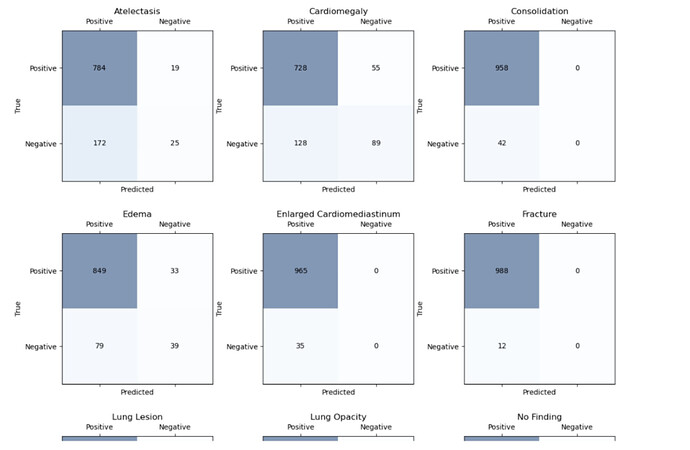0
I’m working on a multilabel classification task with 14 different disease classes. I’ve trained my model, and I want to generate a single multilabel confusion matrix where both the x-axis and y-axis represent the 14 classes.
However, when I try to generate the confusion matrix using my current code, it creates a separate confusion matrix for each class. Instead, I would like a unified confusion matrix where the true labels and predicted labels are across the same 14 classes on both axes.
Here are the key details of my setup:
- I’m using PyTorch.
- I have a trained model and access to train_loader.
- I’ve successfully used my model for prediction, but I’m stuck on how to aggregate the results into a single confusion matrix for multilabel classification.
Here’s the code I’m using to generate the confusion matrix:
import numpy as np
import matplotlib.pyplot as plt
from sklearn.metrics import multilabel_confusion_matrix
# Initialize lists to store true labels and predictions
all_labels = []
all_predictions = []
# Disable gradient calculation for inference
with torch.no_grad():
for images, labels in test_loader:
images, labels = images.to(device), labels.to(device)
# Forward pass to get model predictions
outputs = best_model(images)
# Store true labels and predicted probabilities
all_labels.extend(labels.cpu().numpy())
all_predictions.extend(outputs.cpu().numpy()) # Get the raw output (probabilities)
# Convert to numpy arrays for easier manipulation
all_labels = np.array(all_labels)
all_predictions = np.array(all_predictions)
# Apply thresholding to convert probabilities to binary predictions
binary_predictions = (all_predictions > 0.5).astype(int)
# Compute the multilabel confusion matrix
confusion_mtx = multilabel_confusion_matrix(all_labels, binary_predictions)
# Function to plot the multilabel confusion matrix
def plot_multilabel_confusion_matrix(confusion_mtx, class_names):
num_classes = confusion_mtx.shape[0]
ncols = 3 # Set the number of columns for the plot
nrows = (num_classes + ncols - 1) // ncols # Calculate the number of rows needed
fig, axes = plt.subplots(nrows=nrows, ncols=ncols, figsize=(ncols * 4, nrows * 4))
axes = axes.flatten() # Flatten the 2D array of axes for easy iteration
for i in range(num_classes):
ax = axes[i]
ax.matshow(confusion_mtx[i], cmap=plt.cm.Blues, alpha=0.5)
ax.set_xlabel('Predicted')
ax.set_ylabel('True')
ax.set_title(class_names[i])
# Set x and y axis ticks to show "Positive" first and "Negative" second
ax.set_xticks([0, 1])
ax.set_xticklabels(['Positive', 'Negative']) # Positive first
ax.set_yticks([0, 1])
ax.set_yticklabels(['Positive', 'Negative']) # Positive first
# Show the counts
for j in range(confusion_mtx[i].shape[0]):
for k in range(confusion_mtx[i].shape[1]):
ax.text(k, j, confusion_mtx[i][j, k], ha='center', va='center')
# Hide any unused subplots
for i in range(num_classes, len(axes)):
axes[i].axis('off')
plt.tight_layout()
plt.show()
# Plot the multilabel confusion matrix
plot_multilabel_confusion_matrix(confusion_mtx, class_names)
What I get is 14 separate confusion matrices, but I need a single confusion matrix with all 14 classes represented on both axes.
Here’s an image of what I’m getting:
And here’s what I want:

